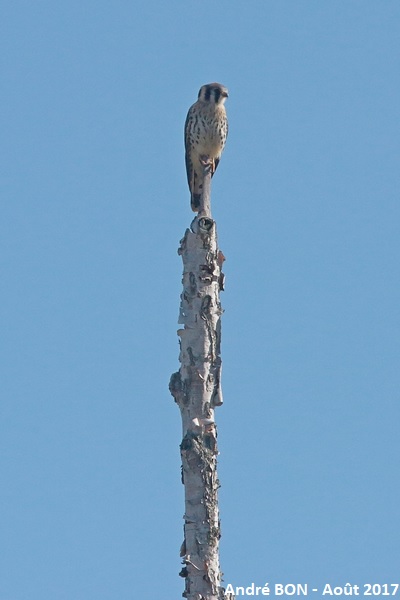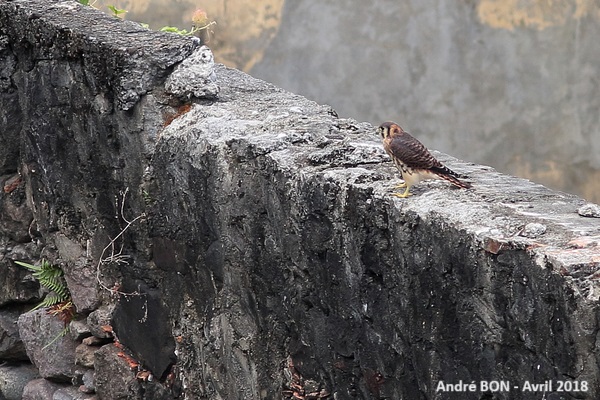

| American Kestrel (Falco sparverius (Linnaeus, 1758)) |


|
|
Scientific name: Falco sparverius (Linnaeus, 1758) Common name: American Kestrel Other names: Sparrow Hawk French name: Crécerelle d'Amérique Order: Falconiformes Family: Falconidae Size: Body size: 25 to 31 cm; Weight: 84 to 165 g; Wingspan: 51 to 61 cm. Habitat: Open forests, woodland edges, cultivated areas, grasslands with dead trees and deserts with large cacti, urban areas. Food: Large insects, small mammals, small birds, lizards, amphibians and scorpions. The American Kestrel hunts from perches or in flight and swoops down on its prey as soon as it is detected. Nesting: The nest is a bare cavity or crevice in a tree or a cliff between 3.5m and 25m high. There are one or two clutches of 4 to 5 eggs per year. Migration: Partially migratory, only the northernmost birds move south in winter. Geographic area: North America and South America. |
The male American Kestrel has a grey and blue top of the head, the nape is buff. The face is white and crossed by two black vertical bands, one of which descends directly from the eye. The back is reddish brown striped with black lines. The wings are grey blue. Breast, upper belly and flanks are pinkish-brown. The lower belly and thighs are white with black spots. The tail is rufous-brown with a broad black subterminal band. Females are duller in colour. The wings are the same colour as the back and have no grey. The tail is barred with about ten small black stripes. Chest and upper abdomen are streaked with dark bands, lower abdomen is spotless. |
| [To know more about the American Kestrel] [Next picture] [Top] |

|
I photographed this American Kestrel during a guided tour around the Pourvoirie Némiskau in the hope of encountering bears. For lack of bears, we were able to see large clearcuts, very criticized by our guide, not at the level of the cut but of the replanting only oriented towards forest yield and not taking into account the impact on biodiversity. I think the streaked chest and the uniform lower belly indicate a female American Kestrel. |
| [To know more about the American Kestrel] [Previous picture] [Top] |

|
I observed this American Kestrel while visiting the ruins of Saint-Pierre. It was very distant and this view is an important crop. |